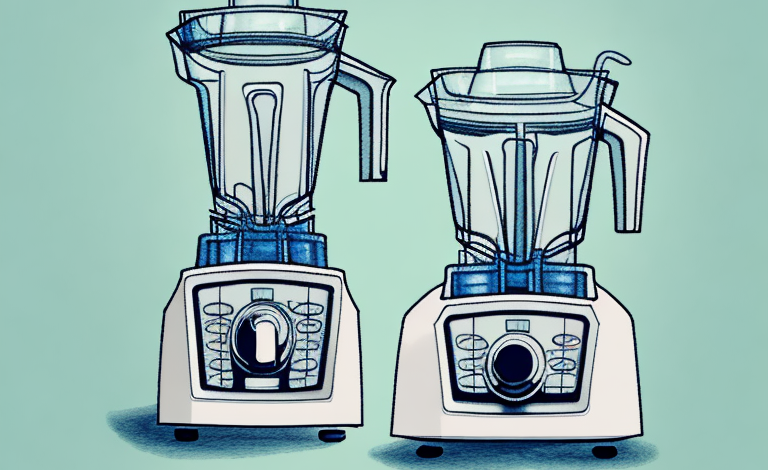A common question that many people ask when it comes to purchasing a microwave oven is whether they need an inverter microwave or not. While regular microwaves have been around for decades, inverter microwaves are a more recent invention that has gained popularity in recent years. In this article, we’ll take a closer look at the basics of microwave ovens, explore the difference between a regular microwave and an inverter microwave, and help you decide if an inverter microwave is the right choice for your needs.
Understanding the basics of a microwave oven
Before we dive into the world of inverter microwaves, let’s start by understanding how a typical microwave oven works. To put it simply, microwaves work by using electromagnetic radiation to heat up food. The microwaves bounce off the walls of the oven and pass through the food, which causes the molecules in the food to vibrate and generate heat. This heat, in turn, cooks the food.
It’s important to note that not all materials are suitable for use in a microwave oven. Metal, for example, reflects microwaves and can cause sparks or even a fire. Additionally, certain types of plastic can melt or release harmful chemicals when heated in a microwave. It’s always best to use microwave-safe containers and utensils when cooking or reheating food in a microwave oven.
Another factor to consider when using a microwave oven is the importance of proper ventilation. Microwaves generate a lot of heat, and without proper ventilation, this heat can build up and cause damage to the oven or even start a fire. It’s important to ensure that the vents on the microwave are clear and unobstructed, and that the oven is not placed too close to other appliances or objects that could block the airflow.
The difference between a regular microwave and an inverter microwave
So, what sets an inverter microwave apart from a regular microwave? The main difference lies in the way that power is delivered to the oven. In a regular microwave, the power is turned on and off at intervals to control the cooking temperature. This method, known as pulse wave modulation, can result in uneven cooking and overheating in some areas.
In contrast, an inverter microwave delivers a steady stream of power that adjusts to the cooking needs of the food. This means that the temperature is more consistent, and there is less risk of overcooking or undercooking the food.
Another advantage of inverter microwaves is that they can cook food more quickly and efficiently. Because the power is delivered in a steady stream, the food is cooked more evenly and thoroughly, which can reduce cooking time. Additionally, inverter microwaves are often more energy-efficient than regular microwaves, which can save you money on your electricity bill in the long run.
How does an inverter microwave work?
But how exactly does an inverter microwave achieve this precision cooking? In an inverter microwave, the power supply uses a DC (direct current) to AC (alternating current) converter to deliver a continuous stream of power to the magnetron. This magnetron then generates microwave radiation, which is directed into the cooking cavity through a waveguide.
As the food cooks, the inverter adjusts the power level to match the cooking requirements. For example, if you’re cooking something that requires a low power level, the inverter will deliver just the right amount of energy to cook the food evenly without overcooking it.
Another advantage of inverter microwaves is that they can defrost food more evenly than traditional microwaves. In a traditional microwave, the power is cycled on and off during the defrosting process, which can result in uneven thawing. In an inverter microwave, the power is delivered continuously, allowing for a more consistent defrosting process.
Additionally, inverter microwaves are often quieter than traditional microwaves. This is because the continuous power delivery system eliminates the need for the magnetron to turn on and off repeatedly, which can create a loud humming noise.
Advantages of using an inverter microwave
There are several advantages to using an inverter microwave over a regular microwave. Firstly, as we mentioned earlier, inverter microwaves provide more consistent cooking results, which means that your food is less likely to be overcooked or undercooked. This precision cooking also means that you can cook a wider variety of foods with confidence, including more delicate items like fish and vegetables.
Inverter microwaves also tend to be quieter than regular microwaves since the power is constantly being adjusted rather than abruptly turned on and off. Additionally, some models come with extra features like sensor cooking, which can automatically detect the cooking requirements of the food and adjust the power levels accordingly.
Another advantage of using an inverter microwave is that it can help you save time in the kitchen. Inverter microwaves cook food faster and more efficiently than regular microwaves, which means that you can spend less time waiting for your food to cook and more time enjoying your meal. This can be especially helpful if you have a busy schedule or need to prepare meals quickly.
Finally, inverter microwaves are often more energy-efficient than regular microwaves. Since they use less power to cook food, they can help you save money on your energy bills over time. This can be a significant benefit for those who use their microwave frequently or have a large family that relies on the microwave for cooking and reheating meals.
Disadvantages of using an inverter microwave
While inverter microwaves offer many advantages, there are also a few potential drawbacks to consider before you make a purchase. Firstly, inverter microwaves tend to be more expensive than regular microwaves, although the price difference is narrowing as the technology becomes more widely adopted.
Another consideration is that inverter microwaves can be more complex than regular microwaves. This means that they may require more maintenance over time, and there are more things that can go wrong. If your inverter microwave does break down, it may be more difficult to repair than a regular microwave.
Additionally, inverter microwaves may not be suitable for all types of cooking. For example, if you frequently use your microwave for tasks such as defrosting or reheating, a regular microwave may be more suitable and cost-effective. Inverter microwaves are best suited for tasks that require precise temperature control, such as cooking delicate dishes or melting chocolate.
Factors to consider before purchasing an inverter microwave
If you’re considering purchasing an inverter microwave, there are a few factors to consider before you make a decision. Firstly, think about how you plan to use the microwave. If you’re someone who likes to cook a wide variety of foods in the microwave, an inverter microwave may be a good choice. However, if you mainly use your microwave for reheating leftovers or cooking simple dishes, a regular microwave might be more than adequate.
Another factor to consider is size. Inverter microwaves tend to be larger than regular microwaves, so you’ll need to make sure that you have enough counter space to accommodate it. Additionally, if you plan to use your microwave for big items like family-sized frozen meals, make sure that the microwave you choose has a large enough cooking cavity to fit them.
How to choose the right size of an inverter microwave for your needs
When it comes to choosing the right size of an inverter microwave for your needs, there are a few things to keep in mind. Firstly, think about the size of your family and the types of foods you plan to cook in the microwave. If you have a large family or regularly cook big meals, you’ll want a larger microwave with a bigger cooking cavity.
However, if you mainly use your microwave for reheating leftovers, a smaller microwave may be more appropriate. Keep in mind that bigger microwaves tend to be more expensive, so make sure that you’re choosing the right size for your needs and budget.
Tips for using an inverter microwave efficiently
If you do decide to purchase an inverter microwave, there are a few tips and tricks you can use to get the most out of your appliance. Firstly, take the time to read the instruction manual carefully so that you understand how to use all of the features and settings.
It’s also a good idea to invest in microwave-safe cookware, since some materials can’t be used in microwaves. When you’re using your inverter microwave, make sure to stir and rotate your food periodically to ensure even cooking.
Maintenance and cleaning of an inverter microwave
Like all appliances, inverter microwaves require regular maintenance and cleaning to keep them in good working order. Be sure to unplug the microwave before cleaning it, and use a soft cloth and mild detergent to wipe down the exterior.
The interior of the microwave can be cleaned by placing a bowl of water containing a few drops of lemon juice inside the microwave and running it for a few minutes. The steam will help to loosen any grime or stains, making it easier to wipe them away.
Comparing prices: Inverter vs Regular Microwave
As we mentioned earlier, inverter microwaves tend to be more expensive than regular microwaves, although the price difference is getting smaller as the technology becomes more widely used. When comparing prices, be sure to look at the features and size of the microwave to ensure that you’re getting the best value for your money.
Customer reviews and recommendations for inverter microwaves
Before making a purchase, it’s always a good idea to read customer reviews and recommendations to get an idea of how well the product performs. Look for reviews from people who use their microwave for similar purposes to you, and pay attention to any common complaints or issues.
Alternatives to buying an inverter microwave
If you’re not sure if an inverter microwave is the right choice for you, or if you’re put off by the higher price tag, there are a few alternatives to consider. One option is to buy a regular microwave with a turntable, which can help to provide more consistent cooking results than a microwave without a turntable.
Another option is to use a more traditional cooking method, like a stovetop or oven, although this may not be as convenient or quick as using a microwave.
Conclusion: Is an inverter microwave worth the investment?
So, do you really need an inverter microwave? The answer ultimately depends on your needs and how you plan to use the appliance. While inverter microwaves do offer some advantages over regular microwaves in terms of precision cooking and consistency, they also come with a higher price tag and may require more maintenance over time.
If you’re someone who cooks a lot of different types of food in the microwave and values precision cooking, an inverter microwave might be the right choice for you. However, if you mainly use your microwave for simple tasks like reheating leftovers, a regular microwave may be more than sufficient.
Ultimately, it’s up to you to weigh the pros and cons and decide if an inverter microwave is worth the investment for your household.



